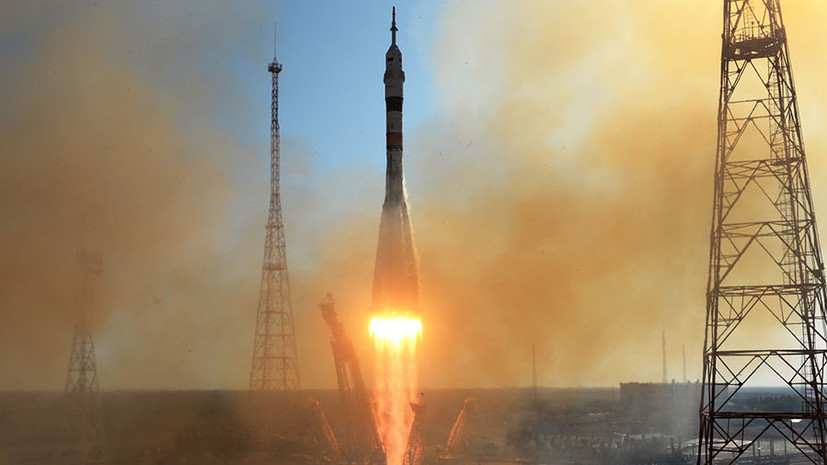On Saturday morning, August 24, the Soyuz MS-14 spacecraft, on board which, in addition to cargo, is the Russian anthropomorphic robot FEDOR, was unable to land on the Search module of the International Space Station. It approached the ISS by less than 100 m, after which it hung and proceeded to retreat to a safe distance.
“Everything was fine up to a range of about 200 meters, then we went on previously unseen fluctuations and at the mooring stage we realized that we won’t be able to dock automatically,” said cosmonaut Vladimir Solovyov, flight director of the ISS Russian segment.
According to him, the Soyuz spacecraft is in automatic flight, communication with it is not lost, and all the equipment is operational. Solovyov added that the FEDOR robot "so far, unfortunately, has not been taught manual modes."
Meanwhile, Roscosmos emphasized that the incident does not threaten the International Space Station.
“Soyuz MS-14 transport ship is located far from the ISS. Docking is planned for the backup date. The safety of the station and the crew is not in danger, ”the report said.
Ship # SoyuzMS14 is located at a distance from the ISS. Docking is planned for the backup date. The safety of the station and the crew is not in danger. pic.twitter.com/T621Kv196Y
- ROSKOSMOS (@roscosmos) August 24, 2019In turn, the US space agency NASA specified when a reconnection attempt could be made.
“An attempt to dock after 24 hours will be skipped. Russian experts will try to dock the ship to the station in 48 hours - on Monday morning, ”the NASA broadcast announcer said.
According to RIA Novosti, citing a source in the Russian space and rocket industry, the cause of an emergency could be a malfunction in the docking system.
“In the process of docking in the operation of the equipment of the passive set of the Kurs video information system on the ISS, problems appeared when switching to the approach mode. The schedule for further action is determined by the state commission. Today, August 24, a series of experiments on the rehabilitation of equipment will be carried out, ”the source said.
NASA also said that the problem with the docking arose due to the amplifier of the Kurs system on board the ISS, it will soon be replaced by astronauts in orbit. This information was confirmed by the flight director of the ISS Russian segment, Vladimir Solovyov.
“An analysis of telemetry showed that we have comments, correctable comments, on the radio equipment,” the astronaut explained.
Immediately after the incident, a meeting of members of the state commission on the incident with Soyuz MS-14 began in the control room of the control center. The director general of the Rocket and Space Corporation Energia Nikolai Sevastyanov, the head of the Cosmonaut Training Center, Pavel Vlasov, the director of the MCC Maxim Matyushin, the head of the Roskosmos head research institute TsNIImash Sergey Koblov take part in it. Later they were joined by Dmitry Rogozin, head of the state-owned space corporation. They analyze the situation and discuss measures to eliminate a malfunction in the docking system.
Recall that on August 22 at 06:38 Moscow time, the Soyuz-2.1a launch vehicle with the Soyuz MS-14 spacecraft was successfully launched from the launch site of the platform No. 31 of the Baikonur Cosmodrome. On board are equipment for scientific experiments, medical supplies, containers with diets, packages for the crew, as well as the Russian anthropomorphic robot FEDOR, the name Skybot F-850. Before starting, he repeated the famous words of the first cosmonaut of the Earth Yuri Gagarin: “Let's go! Go!".
According to plans, Russian cosmonauts will have to test the robot systems in space flight, and he will perform up to six experiments. FEDOR is believed to be in orbit until September 7th.
“The main task for which he will be there is to work out man-machine interaction so that in the next flights the robot will be taken out of the station, plus it will be specially prepared for work in a vacuum, because it will begin its main work, the main activity, that is, where there is danger for a person and where a robot can replace a person, ”explained Alexei Bogdanov, chief designer of the Android Technology NGO.
He also expressed the view that FEDOR could first go into outer space “much earlier” than the planned deadline for 2021.

